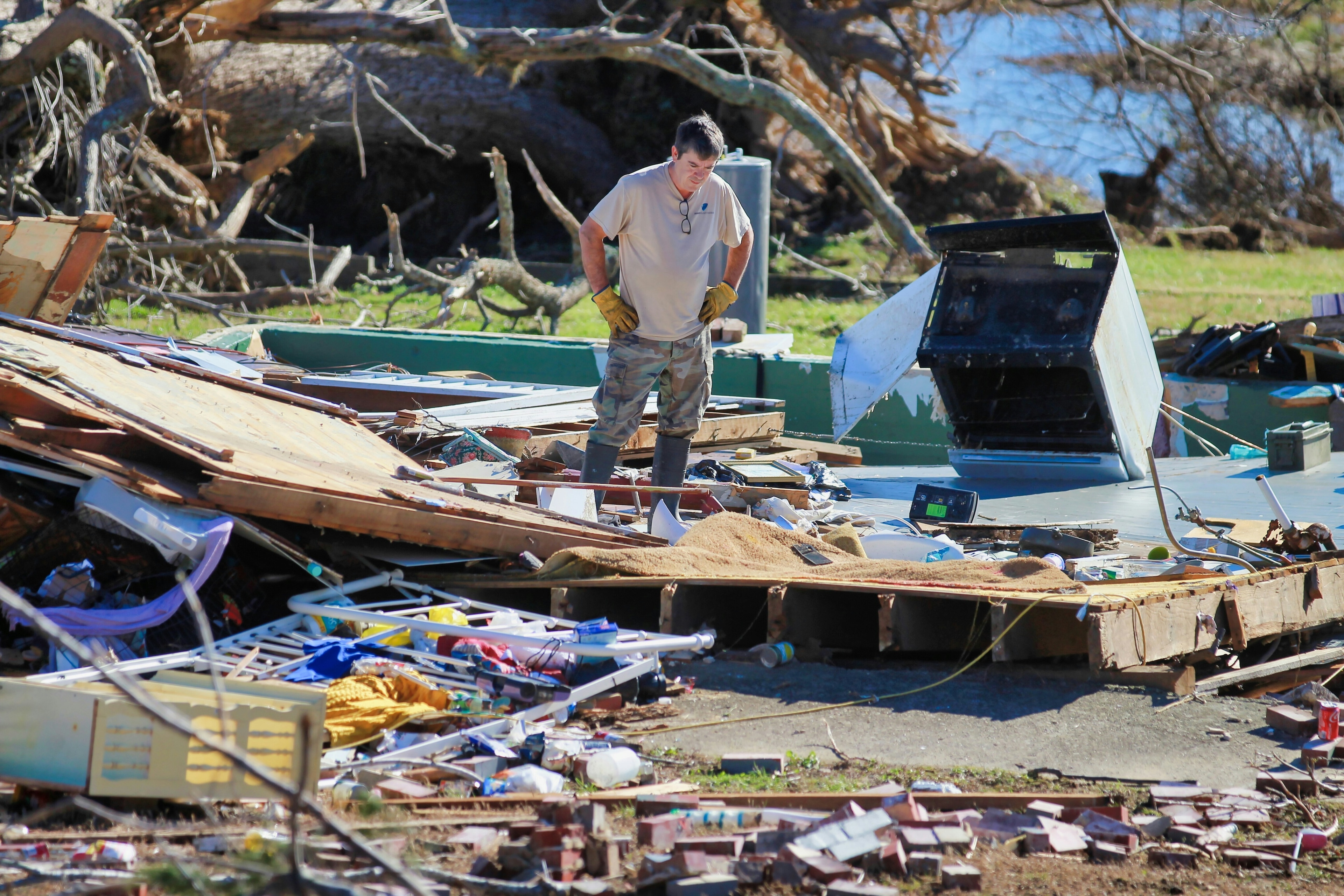Humanitarian crises are growing. So how do we make crisis response more efficient?

Humanitarian crises, regardless of when or where they occur, demand rapid responses and a coordinated "all hands on deck" approach.
Image: Reuters/Hamad I Mohammed
Stay up to date:
Humanitarian Action
- Advanced technology in tandem with global collaboration can transform humanitarian action.
- A unified global databank would help resolve the growing volume and fragmentation of humanitarian data.
- Strengthened global cooperation between different stakeholders would further bolster humanitarian responses.
In the past decade, humanitarian crises have escalated in both frequency and intensity –ranging from climate change-induced disasters to protracted conflicts and pandemics. According to the United Nations Office for the Coordination of Humanitarian Affairs (UN OCHA), over 299 million people are expected to need humanitarian assistance and protection in 2024, marking a staggering increase from previous years.
This troubling shift spotlights the need for a corresponding evolution in how humanitarian operations are planned, executed and sustained. Central to this evolution is the adoption of a holistic approach that integrates advanced technology with the power of global collaboration; two pillars that combined can transform humanitarian efforts into more efficient, sustainable and impactful operations.
However, achieving this synergy is riddled with challenges. Humanitarian crises, regardless of when or where they occur, demand rapid responses and a coordinated "all hands on deck" approach involving not only humanitarian agencies, but also government departments, aid facilitators, logistics partners, corporate donors and individual volunteers. Despite these collective efforts, a major hurdle in the traditional framework is the fragmented view of available resources, compounded by the time-sensitive nature of crisis response.
In many regions, these obstacles remain entrenched. The exchange of information during crises is hampered by differing national policies, customs regulations and varying warehouse management systems, all of which complicate the coordination of aid.
A further complicating factor is the overwhelming volume of data generated during crises. This data – from demographic details to health records and logistics information – often becomes fragmented, leading to delays in aid delivery, duplication of efforts and the exclusion of vulnerable populations from receiving necessary assistance. Poor data management also brings with it the significant risk of sensitive information being mishandled or falling into the wrong hands, resulting in privacy breaches and a loss of trust within affected communities.
To address these challenges, there is a pressing need for a unified global databank: a centralized platform where data from various humanitarian actors can be securely stored, managed and accessed. Such a databank would streamline operations by reducing data fragmentation, enhancing operational efficiency and safeguarding data security. It would also enable real-time data-sharing among humanitarian organizations, ensuring that during emergencies, vital information on resource availability and management is instantly accessible, leading to more coordinated and effective responses.
A prime example of such an initiative is the Humanitarian Logistics Databank established by Dubai Humanitarian. This central portal connects real-time information about life-saving aid of humanitarian agencies available in global humanitarian hubs located in Dubai, Italy and Panama, the first three markets interconnected on the network as of August 2024. The databank has significantly improved emergency response efficiency by creating a database of around 2,000 essential items, each uniquely identified and standardized under Harmonized System (HS) Codes. This standardization has streamlined customs procedures and warehousing, reducing delays and errors in logistics. As of July 2024, the databank shows that aid stocks worth $202 million are ready for dispatch across these hubs, covering critical sectors such as health, logistics, shelter, emergency telecommunications, protection gear, water and sanitation, education and food security.
While technology undoubtedly offers a path to greater efficiency, improved decision-making, and more effective aid delivery, its full capabilities remain untapped in the humanitarian sector. It would be of particular use in integrating national and international systems to keep tabs on prep stocks, responding to the challenge of fragmentation.
This is where a unified global effort that leverages the strengths of diverse stakeholders –government agencies, international organizations, the private sector and local communities –can lead to more coordinated, effective and sustainable humanitarian responses.
For instance, government agencies can streamline customs clearances, offer subsidized duty payments and provide priority access that can significantly enhance the speed and effectiveness of aid delivery. Initiatives like the Humanitarian Logistics Databank, coupled with the development of a unified logistics cluster that provides real-time data on constraints such as road access and transportation routes, could solve up to 90% of the data fragmentation challenge in logistics. Partnerships with organizations like the United Nations Conference on Trade and Development (UNCTAD) can further accelerate customs procedures, allowing aid to cross borders more swiftly.
Additionally, international organizations can collaborate on shared goals to develop programmes, drive policy development, create knowledge-sharing avenues and work closely with stakeholders – including corporates, donors and local communities – to contribute to global causes and realize the true meaning of humanitarian work. Meanwhile, private sector players can contribute in various other ways.
More often than not, corporations or private entities are viewed merely as donors in the humanitarian ecosystem, but their role can extend far beyond financial contributions. The involvement of tech giants, for instance, could address data privacy issues, while financial institutions, logistics companies, manufacturers, sustainability partners and others can bring their own unique expertise, insights, and resources to the table – effectively tackling key challenges pertaining to funding, delivery and packaging.
How is the World Economic Forum helping to improve humanitarian assistance?
In today’s interconnected world, where crises have far-reaching impacts beyond national borders, an approach where everyone has the opportunity to contribute and showcase their expertise is crucial. And, like many global challenges, technology can provide the solution. By harnessing diverse capabilities and expertise, actors in the humanitarian sector have a real opportunity to build a more resilient, just and compassionate world – one where the needs of the most vulnerable are met with speed, precision and care. The challenges are great, but with continued global efforts, we can rise to meet them and ensure that no one is left behind.
Accept our marketing cookies to access this content.
These cookies are currently disabled in your browser.
Don't miss any update on this topic
Create a free account and access your personalized content collection with our latest publications and analyses.
License and Republishing
World Economic Forum articles may be republished in accordance with the Creative Commons Attribution-NonCommercial-NoDerivatives 4.0 International Public License, and in accordance with our Terms of Use.
The views expressed in this article are those of the author alone and not the World Economic Forum.
Forum Stories newsletter
Bringing you weekly curated insights and analysis on the global issues that matter.
More on Global CooperationSee all
Vanina Farber
September 12, 2025
Kate Whiting and Charlotte Edmond
September 9, 2025
Jean-Philippe Salcedo
August 29, 2025
Emily Bayley
August 28, 2025
Michael Spence
August 22, 2025
Nii Simmonds and David Timis
August 18, 2025





